You can listen to Hoosier History Live! live on the air each Saturday, or listen online at the WICR website during the broadcast on any computer with speakers, anywhere, or on a smartphone. We invite you to visit our website!
Sept. 22 show
Unique history of New Harmony
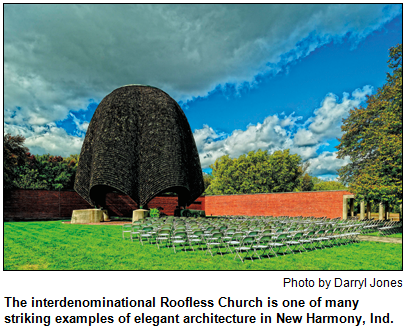 A small, idyllic village that became world-famous because of two experimental utopian communities during the early 1800s will be the focus of the next show in our rotating series about Hoosier towns.
A small, idyllic village that became world-famous because of two experimental utopian communities during the early 1800s will be the focus of the next show in our rotating series about Hoosier towns.
New Harmony, located on the Wabash River in far-southwestern Indiana, was the setting for two historic attempts at communal living.
The town's founders in 1814 were German immigrant George Rapp and his followers, who became known as the Harmonists. Devoted to hard work and self-sacrifice, including celibacy, they built the village while waiting for the second coming of Christ.
The Harmonists eventually sold their scenic village to Scottish industrialist Robert Owen, a social reformer who attracted some of the era's most progressive educators and scientists to New Harmony, many of whom arrived in a "Boatload of Knowledge" in 1826.
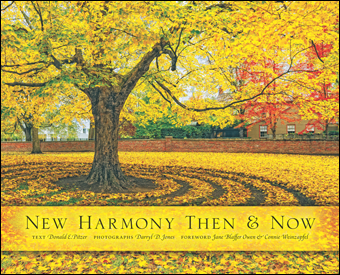 To explore these two attempts at utopia, why they did not last, the current vitality and cultural appeal of the village, as well as a wealth of other aspects of its heritage, Nelson will be joined in studio by the collaborators on a new book, New Harmony: Then and Now (Indiana University Press). They are:
To explore these two attempts at utopia, why they did not last, the current vitality and cultural appeal of the village, as well as a wealth of other aspects of its heritage, Nelson will be joined in studio by the collaborators on a new book, New Harmony: Then and Now (Indiana University Press). They are:
- The author, Donald Pitzer, a professor emeritus of history at the University of Southern Indiana in Evansville. He also is director emeritus of the university's Center for Communal Studies and has spent more than 40 years researching the Harmonist and Owenite communities in New Harmony.
- Acclaimed photographer Darryl Jones, who is known for his images of Indiana. Darryl also has collaborated on books written by two favorite Hoosier History Live! guests: Historical novelist James Alexander Thom (they collaborated on Spirit of the Place: Indiana's Hill Country, and you can click on the Thom link to hear the podcast of the Hoosier History Live! show) and Ray Boomhower of the Indiana Historical Society, who partnered with Darryl for Destination Indiana: Travels through Hoosier History.
Colorful aspects of New Harmony heritage - beyond the intriguing attempts at utopia - that Don, Darryl and Nelson plan to explore include the village's interdenominational Roofless Church, which was designed by legendary architect Philip Johnson in 1960.
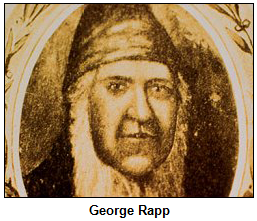 In the early 1800s, the followers of prophet George Rapp fled Germany because they objected to some teachings of the Lutheran church. After initially settling in Pennsylvania, the Harmony Society came to the Indiana wilderness in a quest for spiritual fulfillment.
In the early 1800s, the followers of prophet George Rapp fled Germany because they objected to some teachings of the Lutheran church. After initially settling in Pennsylvania, the Harmony Society came to the Indiana wilderness in a quest for spiritual fulfillment.
According to our guest Don Pitzer, the Harmonists of George Rapp, who numbered about 2,000 in total, "are thought to be the largest religious group to immigrate to America following a single leader."
Harmonist building techniques, which used Roman numeral markings still visible on some of the historic New Harmony structures, "anticipated modern pre-fabricated construction," Don Pitzer writes. Rapp's followers built dormitories to separate the sexes.
The Harmonists sold the village and 20,000 acres of forests, orchards, meadows and farmland in 1824 to Owen, a wealthy cotton mill owner in Scotland. He had been born in Wales in 1771. At the dawn of the Industrial Revolution, Owen became appalled at miserable living conditions, lack of sanitation and rampant crime.
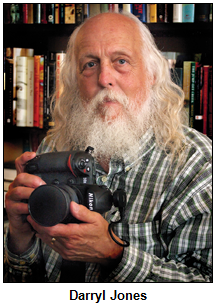 Owen vowed to create a haven free from poverty and inequality that would emphasize education, culture, science and technology. That's why he brought distinguished scholars, scientists, intellectuals and educators to New Harmony via the Wabash River on a so-called "Boatload of Knowledge."
Owen vowed to create a haven free from poverty and inequality that would emphasize education, culture, science and technology. That's why he brought distinguished scholars, scientists, intellectuals and educators to New Harmony via the Wabash River on a so-called "Boatload of Knowledge."
Alas, his utopian community didn't last. Nelson will explore the reasons with Don and Darryl, whose striking color photos in New Harmony Then and Now depict historic structures from both utopian communities, including an original Harmony Society cabin, now part of the Barrett Gate House, as well as Harmonist Community Houses.
Much of the credit for saving and restoring historic New Harmony is attributed to philanthropist Jane Blaffer Owen, a Texas oil heiress who died at age 95 in 2010. Mrs. Owen married a descendant of Robert Owen, then crusaded to restore the community's heritage, as well as celebrate art and culture.
Well-known sites built in modern times that draw visitors to New Harmony include the Roofless Church, as well as the Red Geranium, an acclaimed restaurant. Today, New Harmony also is known for its cultural retreats, interfaith seminars, musical performances and art galleries.
Some insights related to New Harmony:
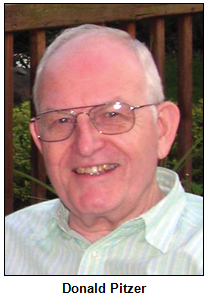 Although the Harmonists' practice of celibacy fascinates the public, the initial utopia seekers found other endeavors to enjoy. According to Don Pitzer, the Harmonists set up the first town band and the first commercial brewery in Indiana.
Although the Harmonists' practice of celibacy fascinates the public, the initial utopia seekers found other endeavors to enjoy. According to Don Pitzer, the Harmonists set up the first town band and the first commercial brewery in Indiana.- The second utopian society also created "firsts." Writes Don Pitzer: "Robert Owen set up the first infant school in the United States at New Harmony, starting what became the kindergarten movement in America." The pioneering "infant school" was housed in Harmonist Community House No. 2 on Main Street, a historic structure that has been preserved; Darryl's photo of it is featured in New Harmony Then and Now.
- Descendants of Robert Owen had an impact on Indiana in many ways. His son David Dale Owen became known as "the pioneer geologist of the Midwest" and is regarded as the founder of the Indiana Geological Society. Another son, Robert Dale Owen, was elected to the Indiana legislature and became an early advocate for women's rights. Yet another son, Richard Owen, became the first president of Purdue University.
History Mystery
A fictional town in Indiana named Harmony is the setting for a series of novels by a contemporary Hoosier storyteller known for his folksy humor. The protagonist in the novels is a Quaker minister, as is the Hoosier author of the books.  His fictional Harmony is a "small town with a kindly spirit," although it bustles with gossip, small-town scandals and eccentric characters.
His fictional Harmony is a "small town with a kindly spirit," although it bustles with gossip, small-town scandals and eccentric characters.
Even though the author gave the name "Harmony" to his fictional Hoosier town, he has conceded the community closely resembles Danville, Ind., his own hometown.
Name the Indiana author who has set a series of books in a fictional town named Harmony.
To win the prize, you must call in with the correct answer during the live show and be willing to be placed on the air. Please do not call if you have won a prize from any WICR show during the last two months. The call-in number is (317) 788-3314, and please do not call until you hear Nelson pose the question on the air.
This week's prize is a gift certificate to a deluxe room at the New Harmony Inn in New Harmony, courtesy of the New Harmony Inn, Resort and Conference Center.
Roadtrip: Panning for gold in Gatesville in Brown County
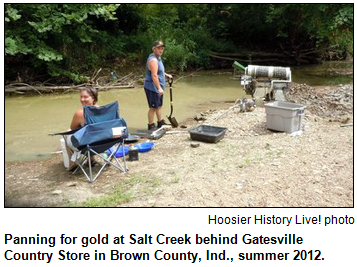 Chris Gahl of Visit Indy returns to our airwaves this week to let us know that there's a free visit to Salt Creek behind the Gatesville Country Store in Brown County if you're interested in panning for gold!
Chris Gahl of Visit Indy returns to our airwaves this week to let us know that there's a free visit to Salt Creek behind the Gatesville Country Store in Brown County if you're interested in panning for gold!
The Gatesville Store rents and sells gold panning equipment, and it also offers camping, rest rooms and a small restaurant. It's owned and operated by entrepreneur Robin Stevens, a native of Brown County who has a background in chemical engineering, geology and hospitality; all skills that seem to intersect with her business offering.
According to the Indiana Department of Natural Resources, panning for gold as a hobby is definitely alive and well in Indiana. Gold is not a naturally occurring metal in Indiana; instead, it was slowly relocated here from Canada by the glaciers, and some of it wound up in the streams of Brown County.
The Gatesville Country Store is near the intersection of Gatesville Road and Salt Creek Road in Brown County and is open seven days. The phone number is (812) 988-0788. No, they don’t have a website, but the food is home cooking at its best.
Your Hoosier History Live! team,
Nelson Price, host and creative director
Molly Head, producer, (317) 927-9101
Chris Gahl, Roadtripper
Richard Sullivan, webmaster and tech director
Pam Fraizer, graphic designer
Garry Chilluffo, creative consultant
Michele Goodrich, Jed Duvall, grant consultants
Joan Hostetler, photo historian
Dana Waddell, volunteer-at-large
www.hoosierhistorylive.org
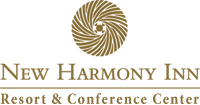
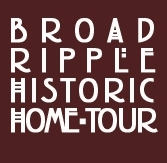
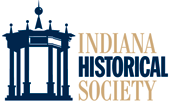

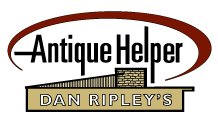


Please tell our sponsors that you appreciate their support: Aesop's Tables | Antique Helper | Broad Ripple Historic Home Tour | Indiana Historical Society | Lucas Oil | New Harmony Inn | Story Inn.
 Acknowledgments to Print Resources, Monomedia, Indiana Humanities, Indianapolis Convention & Visitors Association, WICR-FM, Fraizer Designs, Heritage Photo and Research Services, Conner Prairie, Derrick Lowhorn and many other individuals and organizations. We are an independently produced program and are self-supporting through organizational sponsorships, grants and through individual tax-deductible contributions through Indiana Humanities. Visit our website to learn how you can support us financially.
Acknowledgments to Print Resources, Monomedia, Indiana Humanities, Indianapolis Convention & Visitors Association, WICR-FM, Fraizer Designs, Heritage Photo and Research Services, Conner Prairie, Derrick Lowhorn and many other individuals and organizations. We are an independently produced program and are self-supporting through organizational sponsorships, grants and through individual tax-deductible contributions through Indiana Humanities. Visit our website to learn how you can support us financially.
Sept. 29 show
Ancient people here - and agricultural beginnings in Indiana
With our expanded, one-hour format, we can dig deeper (pardon the pun; the guest will be an archaeologist) with topics that have sparked great interest from listeners. So we are going to explore more aspects of the so-called "Very First Hoosiers," or ancient people who lived more than 10,000 years ago in the densely wooded forests that became the site of Indiana.
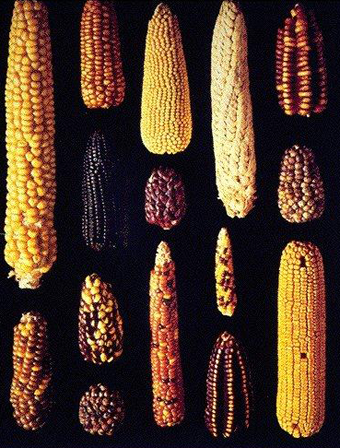 Dr. Christopher Schmidt, an archaeologist, biological anthropologist and popular University of Indianapolis faculty member, will return to share insights about these early residents - as well as fresh insights about the beginnings of agriculture.
Dr. Christopher Schmidt, an archaeologist, biological anthropologist and popular University of Indianapolis faculty member, will return to share insights about these early residents - as well as fresh insights about the beginnings of agriculture.
Chris, the director of the Indiana Prehistory Laboratory at UIndy, has overseen excavations across Indiana and is credited with discovering the oldest known man-made tool in Hoosier soil. Created from the leg bone of a white-tailed deer, the tool is an awl (used for making clothes) discovered during a dig near the town of Flora in Carroll County.
Chris discussed the tool, which is 10,400 years old, and other aspects of the "Very First Hoosiers" when he was Nelson's studio guest in June.
Now he will return to share more details about the ancient Hoosiers, as well as the animal and plant life that surrounded them. Chris describes the ancient people of nearly 11,000 years ago as hunter-gatherers who ate both meat and plants.
As centuries passed, the people began to develop agriculture, a move that, according to Chris, also meant an increase in various diseases. He plans to share insights about the correlation as well as about the origin of maize in Indiana.
During our show in June, Nelson asked Chris about the relationship between the ancient people and Native Americans.
"They were Native Americans - not culturally, but biologically," Chris replied. Their ancestors are believed to have traveled from the Bering Straits to North America, then dispersed.
In addition to overseeing excavations in Carroll County, Chris has led digs in Monroe County (at a site not far from Oliver Winery) as well as Johnson, Jackson and Dearborn counties.
© 2012 Hoosier History Live! All rights reserved.